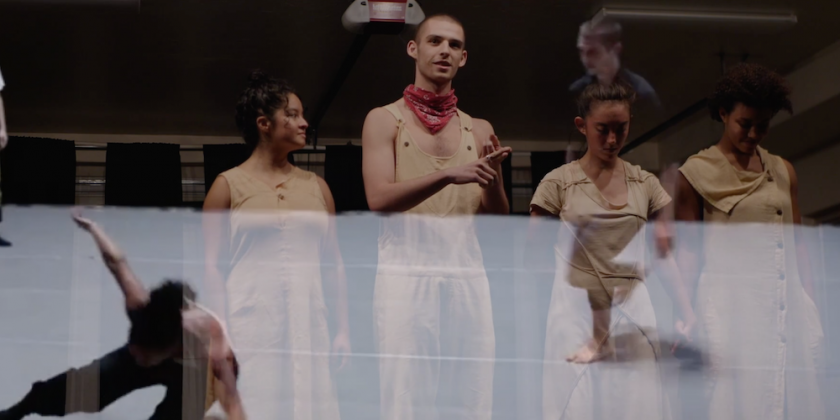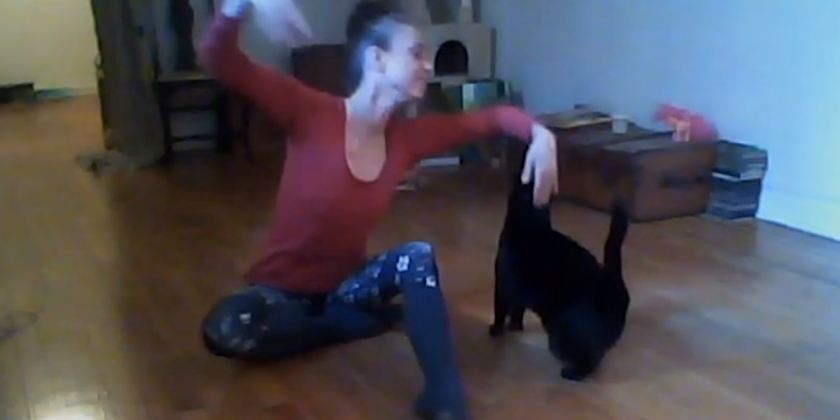Daniel Léveillé Danse's “Solitudes Solo”

Travelogues at Abrons Arts Center
Choreography by Daniel Léveillé
Performed by Mathieu Campeau, Esther Gaudette, Justin Gionet, Jason Martin, and Emmanuel Proulx.
Lighting Design by Marc Parent
Costumes by Geneviève Lizotte

Solitude, whether by accident or design, can seem a foreign concept in our fast-paced, hyper-mobile, super-charged, plugged-in world. Maybe when you’re alone, if you ever find yourself alone, you enjoy binge watching a buzzy television series while swilling wine. Or perhaps, you perfect some hidden fascination like playing the kazoo or making kimchi. Daniel Léveillé, whose Solitudes Solo appeared as part of Abrons Arts Center’s Travelogue Series, spurns self-indulgence for self-abnegation. Solitariness becomes an exploration of ferocity, intensity, and physicality.
Four men and one woman, attired in tiny, colorful trunks, execute a collection of solos reminiscent of a gymnastics floor routine. While each solo features singular movement motifs (head and hip circles in one, flapping bird arms in another), much remains constant. The performers, their bodies buff and rippling, squat deeply before rocketing into jumps that rotate like seething cyclones. Each muscular caper is bookended by moments of stillness and neutrality: Bodies neatly inventoried, the dancers gaze intently ahead, their hands hanging by their sides, feet and legs arranged in a loose parallel.

In Levéillé’s world, the human body is a geometry proof, a set of lines and points to be organized through effort and prowess. A connection emerges between the Greek ideal of beauty and the spirituality of man, as dancers linger in postures evocative of yoga. Moments of repose, in planks and in three-legged downward dogs in which the extended leg traces a measured arc, highlight harmony, both external and internal, as the performers establish an accord between body and soul.
What strikes most about Solitudes Solo is the acute demands of the choreography. Every action must be calibrated to take off and then land with exquisite precision. Most of the time, the dancers hit their hurtling spins and delicate balances with ease. Yet, they are mortals and, from time to time, turns over-rotate and leaps stumble. Unlike math, where things often resolve flawlessly, the body is a work of art, sometimes divine, but more often than not, human.

Set to snippets of Bach, Israel Kamakawiwo’ole, and protracted silences, the most prominent score arises from the dancers’ percussive thudding and grunting. Eyes burning, faces pinched with concentration, the performers, without exception, appear determined to surmount their humanness. This steely willpower becomes wearying as the solos truck onward: Solitude, like most things in life, becomes monotonous when only confronted with the most minute of changes.
The discipline displayed — and it is a display, a taut exhibition of dexterity and power — throws a wall up between them and us, which seems to underscore what Levéillé is saying about solitude: It’s a fight against, never a capitulation to, the blank canvas of personal time and space.












